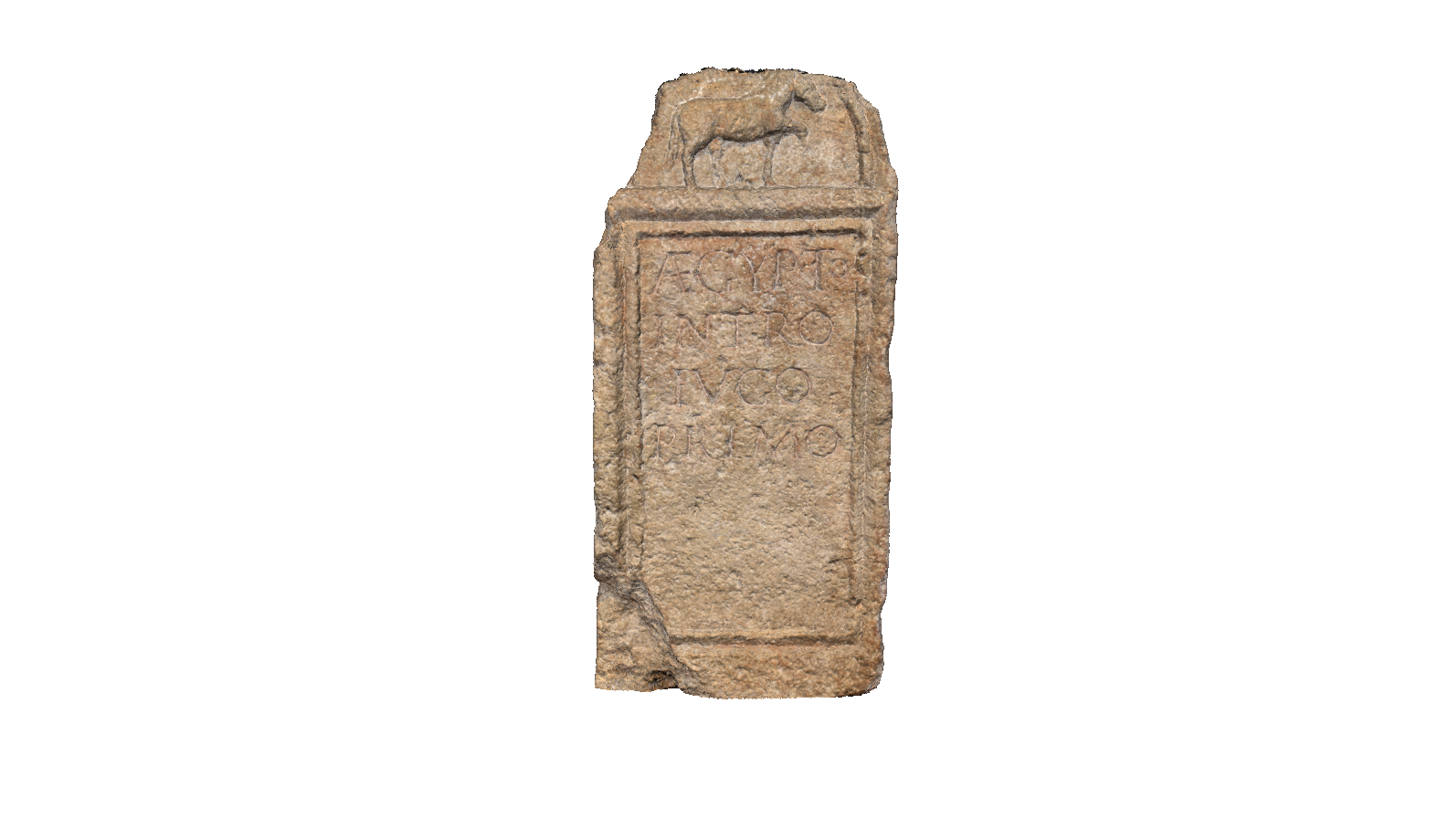Description
Click on the image to go full screen
This trachyte stele, found in 1927 in Via Oberdan, Padua, following the construction of the new city hall, is distinguished by the fact that it is dedicated not to a family member but to a horse, whose figure is engraved in the arch (the upper portion) facing to the right and with one leg raised.
The rather short inscription says: 'Aegypto/ intro/ iugo/ primo'. It is a simple message, explaining the horse's name (his name was Egypt) and his place in the quadriga: he was 'first in the yoke', meaning in the front pair in front of a quadriga; the chariot was used for racing in circuses, and for this reason it was the most important animal, as he was responsible for the difficult task of pulling the others to follow the coachman's movements.
The choice of burying this horse and making this stele (spending money) is certainly peculiar, but it reflects the love his owner must have had for him, perhaps after collecting so many victories. In antiquity, however, demonstrations of affection for one's animals, remembered even after death, are not uncommon: in Roman times, some emperors such as Hadrian or Verus (subsequent to the period to which Egypt’s stele belongs) erected monuments in honour of their favourite horses, while Caligula even appointed his to the rank of senator.

